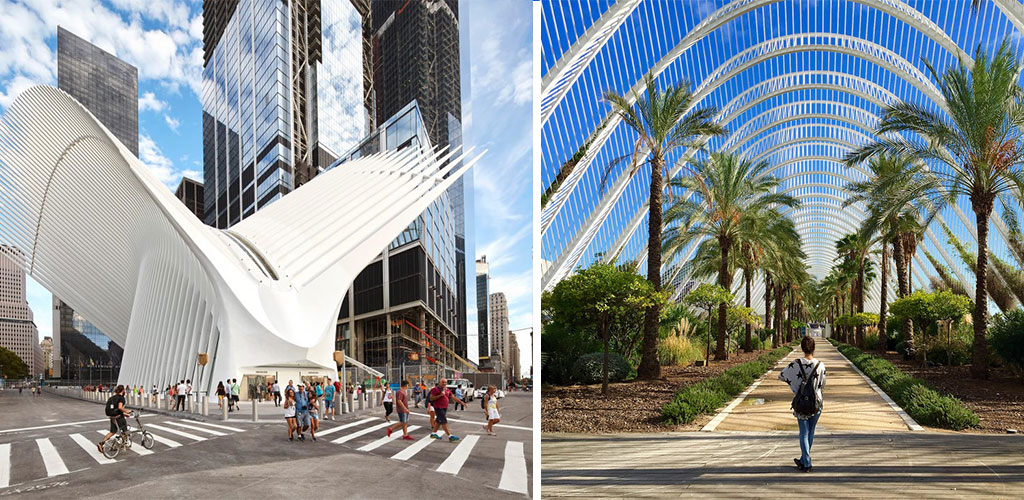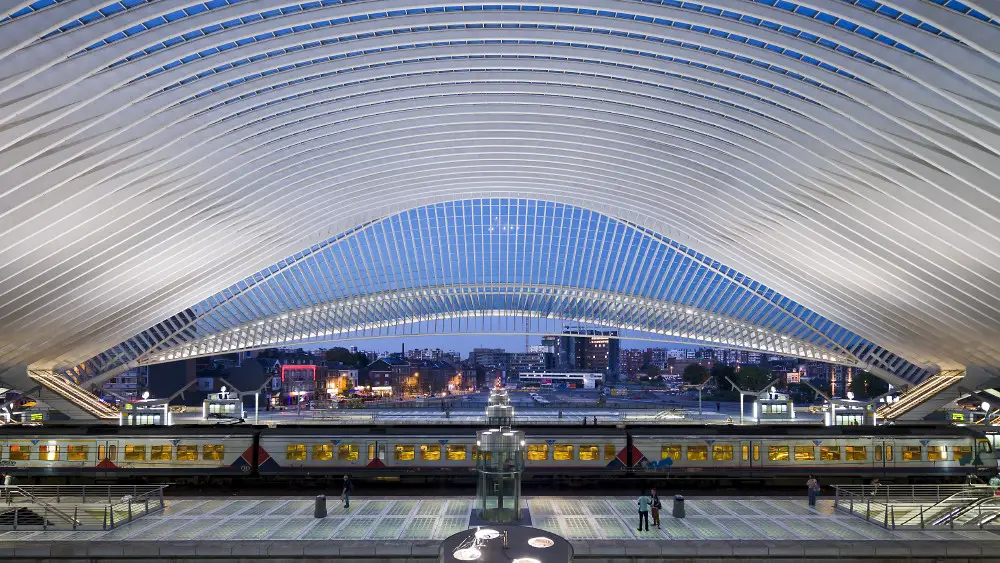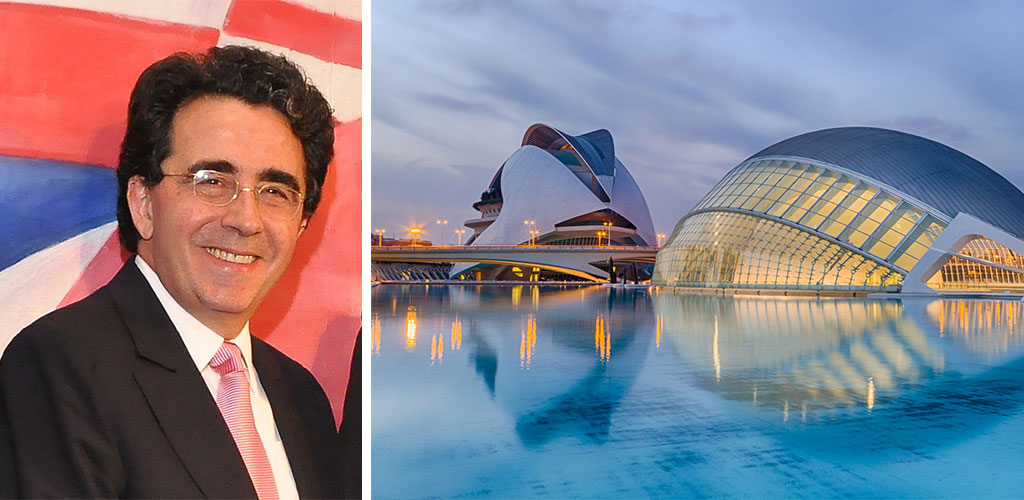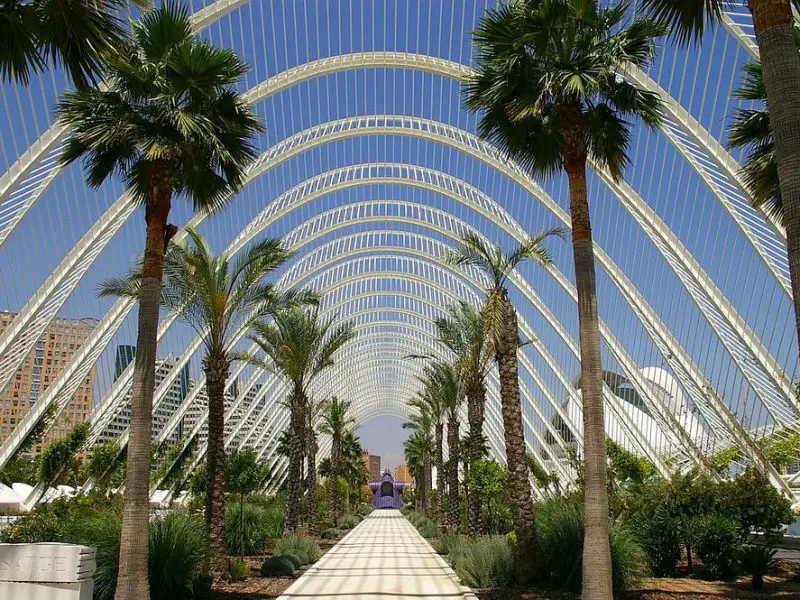All his works vary greatly from the classic architectural lines that you find in large cities, Santiago Calatrava being above all, an urban artist.
He has obtained considerable recognition’s such as these: Prince of Asturias Award for arts, the Spanish National Architecture Award, the “Hijo Predilecto” of Valencia (the favorite son of Valencia) , among others… and it is not surprising because his sculptures made of concrete and steel as his main construction materials have a futuristic style that leave no one indifferent.
In spite of all his acknowledgements, many people today still wonder who Calatrava is and cannot imagine that this controversial Valencian is the creator of works of such resonance as the Tenerife Auditorium and the City of Arts and Sciences in his hometown, Valencia.
Its 350,000 square metres are making the City of Arts and Sciences a great cultural and leisure centre, the largest in Europe. It is, without a doubt, a reference point for the architecture of the present century. This is why it is almost impossible to talk about Valencia and not to mention this great leisure and cultural complex that once you visit it you will discover new emotions and sensations and awaken all your senses.
This ambitious project has placed Calatrava at the apex of the architectural sector in Spain and a great avant-garde reference worldwide. Calatrava could be considered the revolutionary architect of concrete, steel and glass, playing with asymmetry in many cities around the world and creating emblematic points of tourist interest wherever it goes.
And this is why his recognition surpasses borders, to such an extent that it currently has delegations in New York, Zurich and Doha.
As with any well-recognized professional, there is no shortage of critics, the main ones being based on the increase in price of his structures and the great resemblance between them. Nevertheless, each and every one of them is a proof of the ingenuity and talent of this great architect.

WTC New York & Umbracle
The works of Santiago Calatrava have reached a great extent that have crossed borders:
- The Constitution Bridge over the Grand Canal of Venice; which had many problems and the difficulty of building it made the project more than three times more expensive than the budget originally agreed.
- The “Turning Torso” Building in Malmö, Sweden, which was decorated with the “10 year award”. It is the tallest building in Sweden of 190 meters high and represents a twisted human torso. This residential building has become a landmark in architecture.
- The Lusitania Bridge that crosses the Guadiana River in the city of Merida. This bridge was created in 1991 due to the need to leave the old Roman bridge only for pedestrians. With this project, the city was divided with both bridges; passing the Roman bridge is the historic center of Merida and with the new bridge created by Mr. Calatrava you will pass to the modern city of Merida.
- The Railway Station in Liège, Belgium. Its great luminosity and striking appearance has made this station another tourist element to visit in this Belgian city.
- The famous Exhibition Bridge, known as “La Peineta” in Valencia, which crosses the river Turia, replaces a previous bridge that lacked elegance and attractiveness which in turn replaced a footbridge built in 1909 that was destroyed by the large flood that destroyed this city center in 1957. Perhaps this has been the reason why the architect Calatrava gave to this new bridge, a great resistance in its steel construction, which makes it a really firm and safe bridge.
- El Puente de la Mujer, in Buenos Aires. It is a revolving pedestrian bridge in the well-known “Puerto Madero” neighborhood, which has one of the largest turning mechanisms on the planet.
- Museo do Amanhä (meaning “Tomorrow’s Museum”), Rio de Janeiro, Brazil. This museum of “ideas” has been built next to the sea in an old and abandoned port of Rio de Janeiro. The enormous and emblematic building has achieved the construction of new buildings and offices in the forgotten port Maua.

Liege train station
…and there are many other projects that have given a prestigious recognition to this talented Valencian.
Wherever Santiago Calatrava leaves his signature, greatness, art and above all, modernity prevail. A modernity that boasts Spanish cities such as Santa Cruz de Tenerife, Bilbao, his native Valencia, Merida, Murcia, Barcelona and Seville, among others… all of them with a stroke of distinction that differentiates them from the rest with a contemporary touch offered by the works of this famous Valencian who captivated the world.
Perhaps Santiago Calatrava is right now creating another planet with emblematic landscapes or other fancy cities that are far away distinguished from the traditional ones. Perhaps he is creating a landscape scenario where nature and concrete can coexist in large cities, giving clarity to the grey spaces that invade many capitals and giving luminosity to other lands that were hidden and forgotten in the dark… perhaps he is creating cities that provide sustainability and functionality as a main objective, to make a better world….


